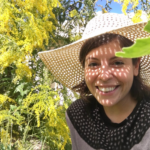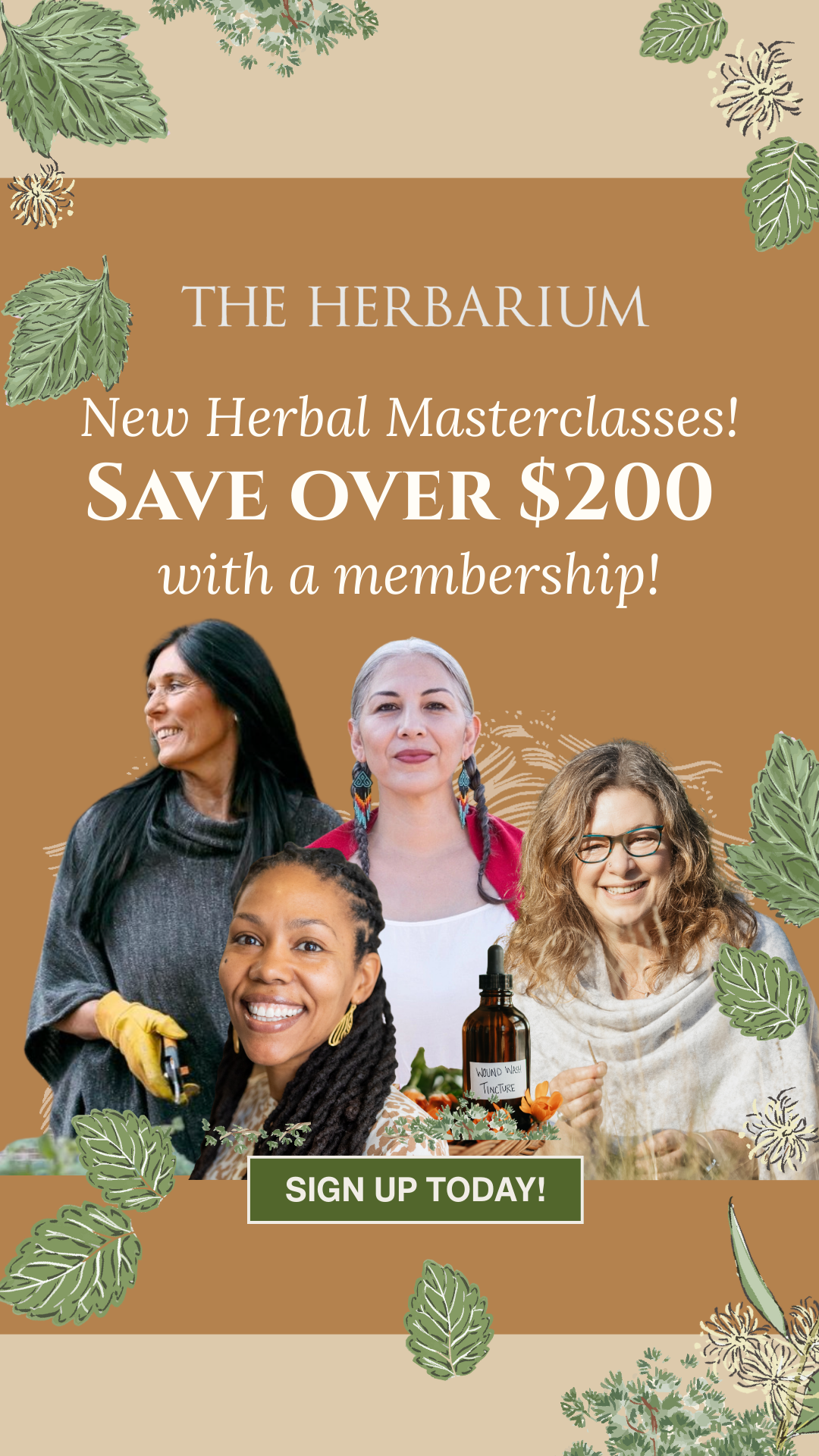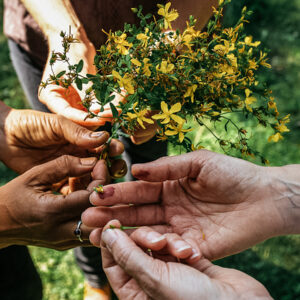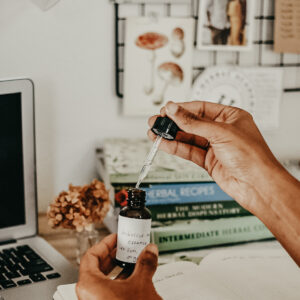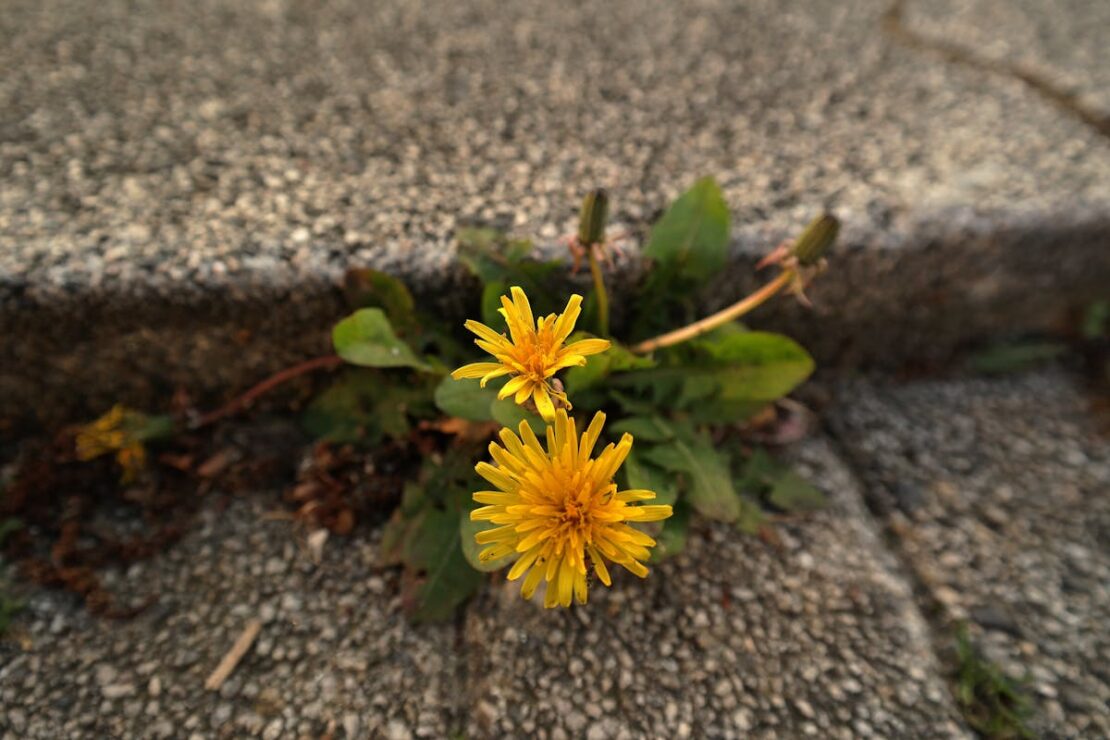
Discover Herbs That Grow in City Spaces and Learn Whether You Can Harvest Them
I love the feeling of emerging from my home for a walk around my neighborhood to find urban herbs emerging in city spaces, greeting the sun right alongside me. Chickweed (Stellaria media), plantain (Plantago spp.), and yarrow (Achillea millefolium) all spring up from the earth along the sidewalks, while violets (Viola spp.) and dandelions (Taraxacum officinale) carpet the lawns in my Midwestern city. The city garden disguised as common lawn weeds holds a special place in my heart.
Early memories of sitting with my little sister looking for four-leaf clovers as we made flower crowns of clover blossoms remind me how integral and organic our connection to and exploration of the plant world is to this human experience. I think there are many people out there with similar memories of sitting on a lawn or in a garden bed, connecting to the plant kingdom and expressing that connection naturally through play. Whose first plant partner wasn’t a simple low-growing lawn flower, gathered in a sweaty palm, delivered half wilted as an expression of admiration?
I still feel a rush of playfulness and inspiration when I see these plants persist and thrive around every corner. Sometimes, all I need to brighten my outlook or give me some perspective is to see a flowering dandelion growing out of a crack in the sidewalk, or a blanket of violets blooming unabashedly where no one planted them. There is something mischievous and cheeky about these common allies defying a lack of expectations and hiding in plain sight in city spaces.

Love It and Leave It
Although some herbs thrive in the city “garden” and have a wealth of support to offer, when in search of plants, it is important to cultivate or seek out reputable sources for these herbs rather than harvesting from public spaces. Maintenance for public spaces may include the use of pesticides that could be harmful if consumed. Some localities may even have laws preventing harvesting in public park spaces.
Along with a bustling city scene comes pollution from heavy traffic. In addition to the risk of pesticide exposure, there is also increased exposure to air and soil pollution. Herbs in public spaces are not protected from the pollution of automobile traffic and can be directly exposed to vehicle exhaust. Greater pet traffic in urban spaces exposes plants in side lawns and parks to high levels of waste.
When making and creating herbal recipes, it is important to source clean, organic (when accessible), high-quality ingredients in order to produce the best tonics to nourish and support the body. Our urban allies are resilient and inspiring, but they do not usually qualify as clean, high-quality plant material for herbal use.
Just because we don’t want to use plants from public spaces in our herbal preparations, we should not discount the value of coming to know the plants that grow around us. A relationship to the natural world is proven to reduce stress and increase inner peace, regardless of how much time you spend in nature (Weir, 2020). Observing your surroundings and noticing the subtle shifts in the environment is a mindfulness practice. Appreciating what we have available is a deep gratitude practice.
This isn’t just an herbalist waxing poetic. Science has shown us that being in relationship to nature increases happiness and a general sense of wellbeing, promotes positive social interactions and engagement, improves manageability of life, and provides a sense of meaning in life (Bratman et al., 2019). With all these benefits waiting right outside the front door, our plant allies give us so much more than the physical plant material.
Meet and Greet: Herbs of Your City Spaces
The following is a list of herbs that are widespread and often found abundantly in city spaces. Although called common, these plants have been important to humans for much of history, due to their readily available nature and efficacy. May this list serve as a doorway to a relationship with nature around and within.
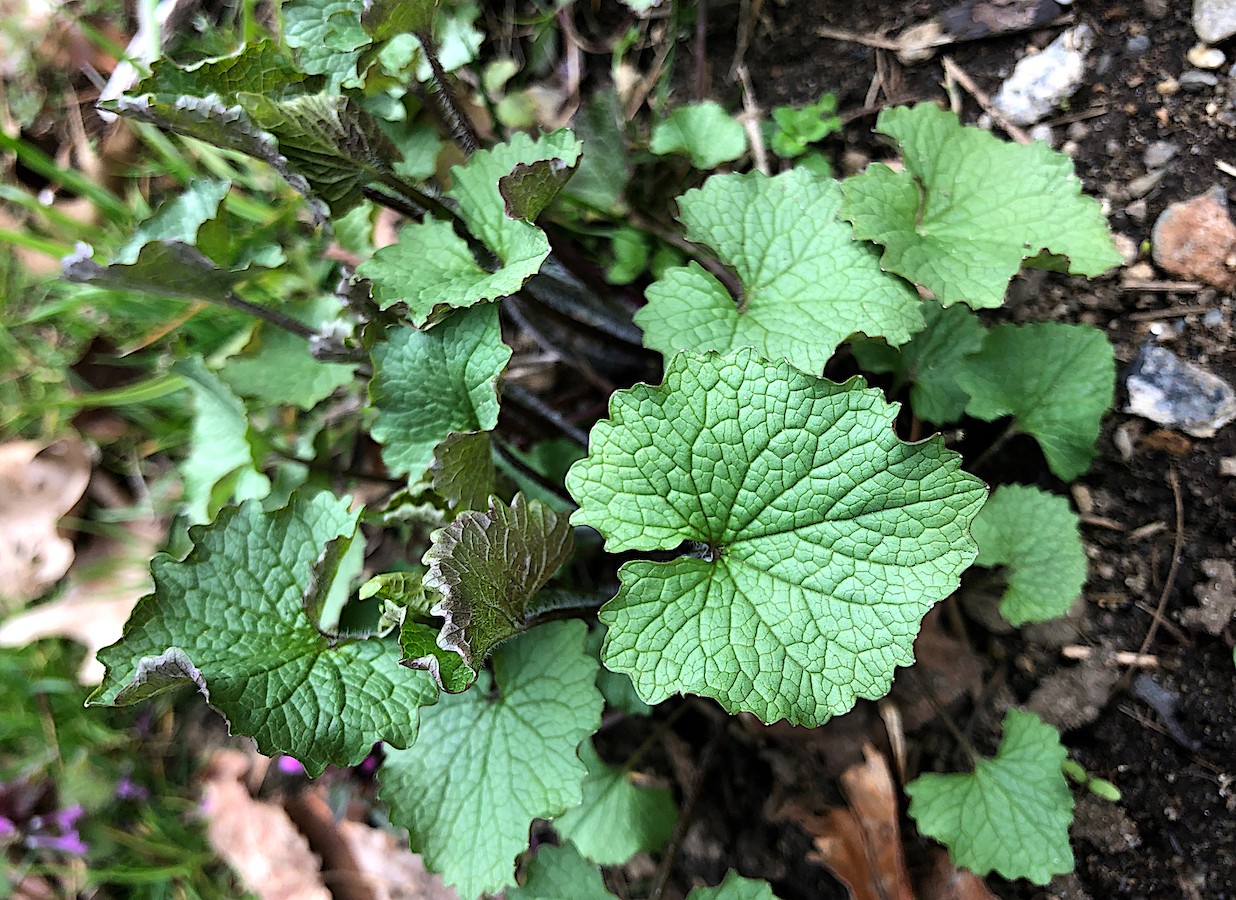
Wild Mustard (Sinapis arvensis)
Wild mustard is an opportunist and will quickly move into any disturbed land without immediate purpose, making it common in abandoned garden plots and construction sites in city spaces. Growing up to 3 feet high, wild mustard bears serrated leaves which are larger and more oblong towards the bottom of the plant, with leaves of a smaller size and more lanceolate shape at the top. The lanky shoots culminate in a spray of yellow, four-petaled flowers. As the flowers mature, the plant forms inconspicuous fruits that ripen into seed pods (Al-Shehbaz, 2012).
As an herbal ally, mustard seed is used as an irritant & stimulant, inducing inflammation when used topically. The young leaves can be eaten in salad, and older leaves are cooked as a “pot herb.” Nutritive, with a pungent and bitter flavor somewhere between radish and cabbage, wild mustard can help to stimulate appetite and digestion. It is best eaten when the shoots are young and the leaves tender. The flowers are edible and add a delightfully peppery note as a garnish (Plants For A Future, n.d.).
Topically, mustard can be used to induce inflammation, increasing blood flow to stiff and achy parts of the body. However, mustard has the potential to burn the skin when directly applied or when applied for too long. James Green tells us to use a buffer, such as cornmeal, in equal weight measure to dried mustard seed powder to create a paste. The paste should be applied over the top of gauze to the affected area for no longer than 5 minutes at a time (Green, 2000).
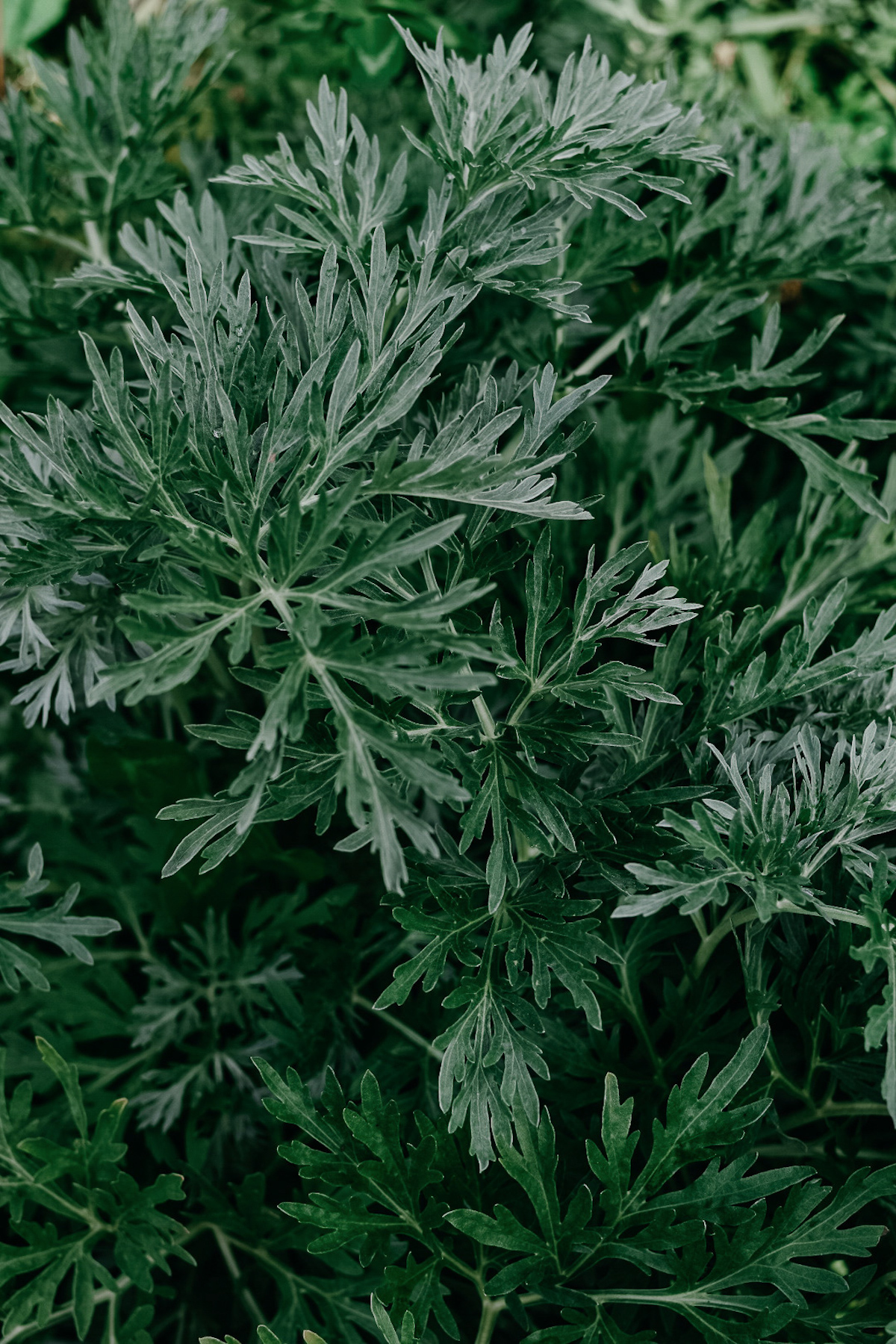
Mugwort (Artemisia vulgaris)
A plant with a rich history worldwide, mugwort (Artemisia vulgaris) can still be spotted living close to people in modern times. Found in alleyways and roadside ditches of city spaces, this perennial can grow up to an impressive 6 feet when left unchecked. Mugwort is resilient, withstanding regular weed whacking, and may simply be found closer to the ground in well-maintained spaces. The smooth, dark green leaves have a silver underside, which makes the foliage shimmer in the summer breeze.
Mugwort is known around the world as an herbal ally for women’s health. “Artemisia” relates to Artemis, the Greek moon goddess, and “vulgaris” means common. Although this herb has many different names around the world, it is used ubiquitously in supporting women’s health concerns through all stages of life, from menses to menopause. This herb is also associated with the mystic and divine and is useful for dream work in various ways (Bruton-Seal & Seal, 2020).
Whether for practical or magical application, the flowering tops and leaves are what we use in practice. Mugwort is an aromatic bitter that can help soothe both the digestive system and the mind. It can be taken internally, used aromatically in a dream pillow, or burned for smoke cleansing. As a plant found widely and in abundance, mugwort can be made into bundles which are a fantastic ethical alternative to white sage (Salvia apiana) and palo santo (Bursera graveolens), which are more limited in growth range and sacred to the Indigenous peoples of their native regions.
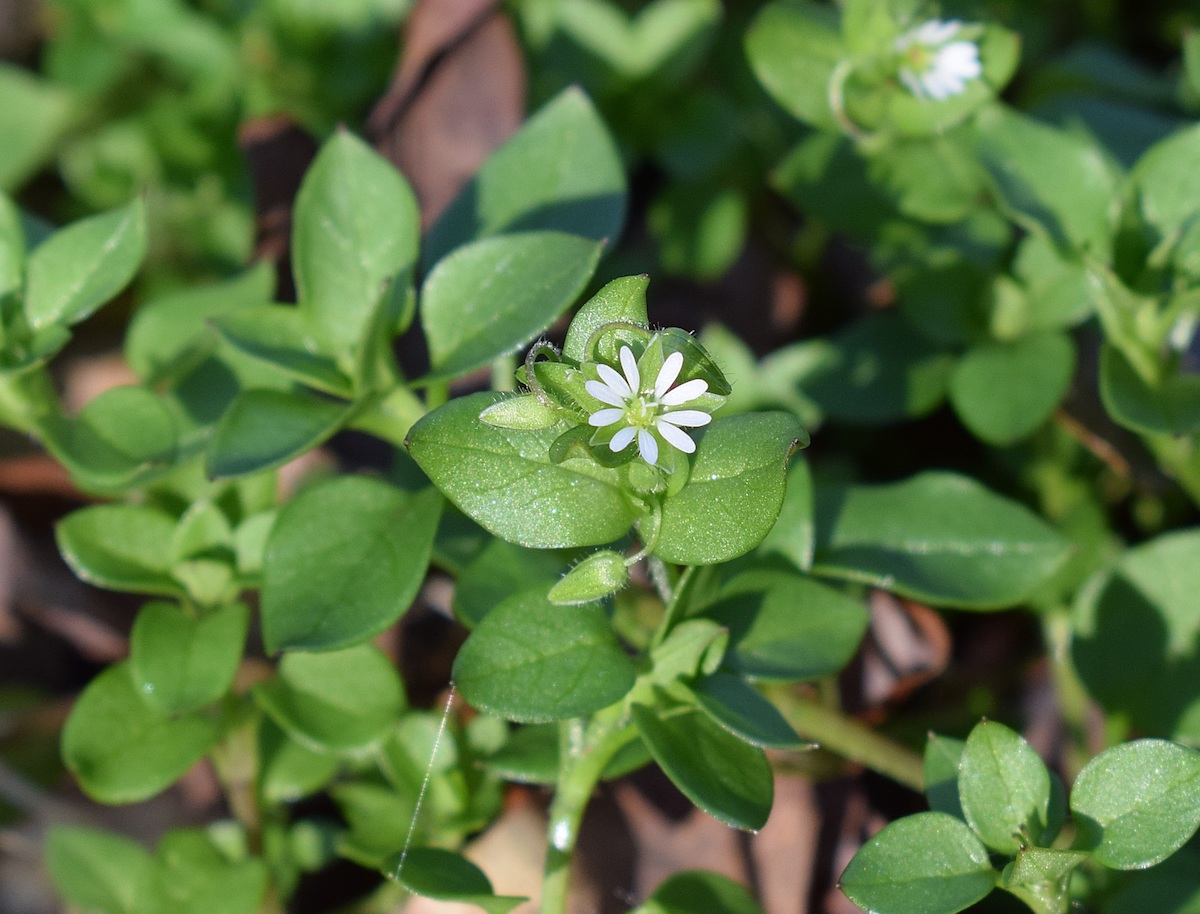
Chickweed (Stellaria media)
Rather than reaching for the sky, this herbal ally stays close to the ground. Herbaceous, branching, tangly tendrils lined with succulent, opposing leaves stretch out to flower. The small, white, symmetrical flowers have star-shaped bracts supporting five-lobed petals. This verdant herbal ally is chickweed (Stellaria media).
Chickweed is a cooling and nutritious herb that grows abundantly in the spring and fall, and is less commonly found in summer and winter. Rich in vitamins and minerals, chickweed is a delightful addition to a green salad and can be made into a pesto when available in abundance. Topically, it can be used to cool rashes, bites, stings, burns, and other skin inflammations when used as a poultice or in creams. Internally, this plant can help the body to eliminate more effectively at a cellular level (Bruton-Seal & Seal, 2020).
Chickweed is a valuable herbal tonic that cools heat and inflammation, nourishes, and supports elimination. If there was ever a plant more perfectly suited to assist with the physical stressors of modern life, I’m not sure I’ve heard of it. Next time you’re out and about in your neighborhood, take a look and I bet you’ll find this herbal ally keeping it cool amongst the hustle and bustle of the cityscape.
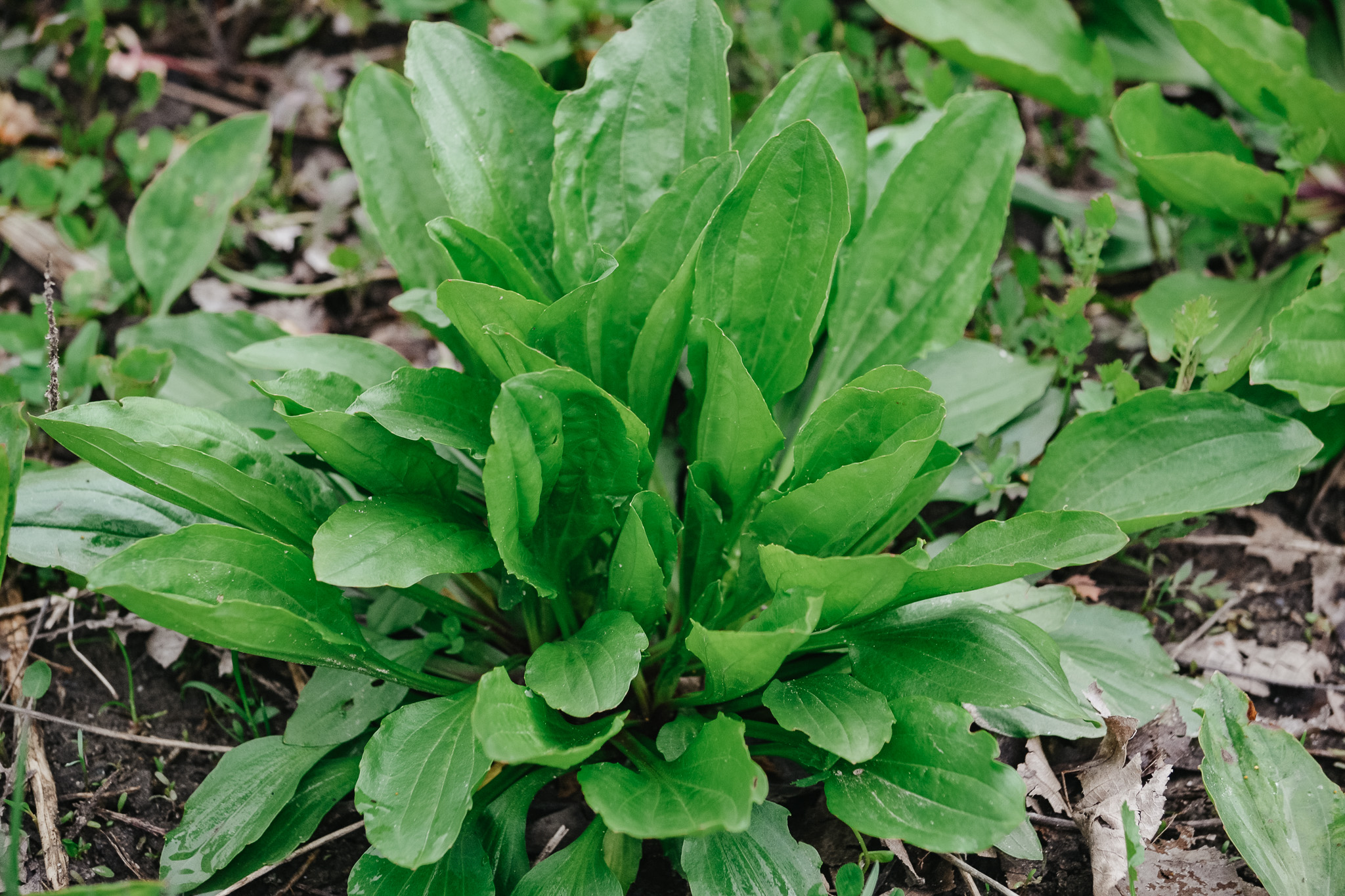
Plantain (Plantago spp.)
Plantain (Plantago spp.) is a common lawn weed in many parts of the world, as this plant is said to have spread by following Europeans around on their many conquests. There are over 200 species in the Plantago genus, many of them with similar properties and actions. Growing close to the ground is a rosette of tough ribbed leaves. The cone-shaped blooms are unique, although not very flashy. Hardy and resilient plantain will continue to grow regardless of regular trodding or mowing.
The tannins in the leaves of plantain have made it a powerful folk and field herb for bites or stings from everything from nettles and bees. A poultice of the leaves applied to inflammatory conditions caused by foreign invasion will help to cool, fight inflammation, and draw out the offending object or venom (Bruton-Seal & Seal, 2020). Internally, plantain has the same cooling and drawing effect on the integumentary tissues, making it a terrific ally for soothing and toning the digestive system.
Plantain leaves have a mild, bitter, and refreshingly green flavor that lends itself well to any tea blend. They can also be taken internally as a tincture. Use an infusion or tincture of the leaves to cool inflammation in the respiratory and digestive systems. A poultice of fresh leaves can be applied to wounds to effectively purify and soothe as a first aid response (Hoffmann, 2003). With so much power packed into the unassuming and resilient plant, it is easy to see why plantain has made a home in so much of the world.

Common Mallow (Malva neglecta)
The common mallow (Malva neglecta) is a plant widely found along alleyways and sidewalks in much of the world’s city spaces. Happy to make a home in any disturbed soil, this herbal ally has the remarkable capacity to grow well in less than ideal conditions. Typically appearing taller in alleyways and lower to the ground in well-maintained areas, the broad, lobed leaves with serrated margins grow alternately from the main stem. Small five-petaled flowers in light shades of pink and purple blossom in the summer months.
The mallow family is known for having cooling, soothing, demulcent properties due to the high levels of polysaccharides present in plant tissues. These long-chain sugars are responsible for mucilage found in plants like mallow, slippery elm (Ulmus rubra), and aloe vera (Aloe barbadensis), all of which help to soothe inflammation. The mucilage in mallow provides protection and aid from heat and irritation both internally and externally.
Mallow root tea can be used with confidence to address a number of digestive complaints, such as acid reflux, indigestion, stomach ulcers, and mild constipation. Its soothing qualities–that you might recognize from the ubiquitous marshmallow, once made from the root of the mallow plant–also make it a great ally for soothing inflammation and irritation of the throat and urinary tract. The leaves can be boiled, cooled, and applied externally to burns and rashes to bring cooling ease to the affected area (Bruton-Seal & Seal, 2020). The young leaves and flowers may be added to salad greens as they are mild and succulent.
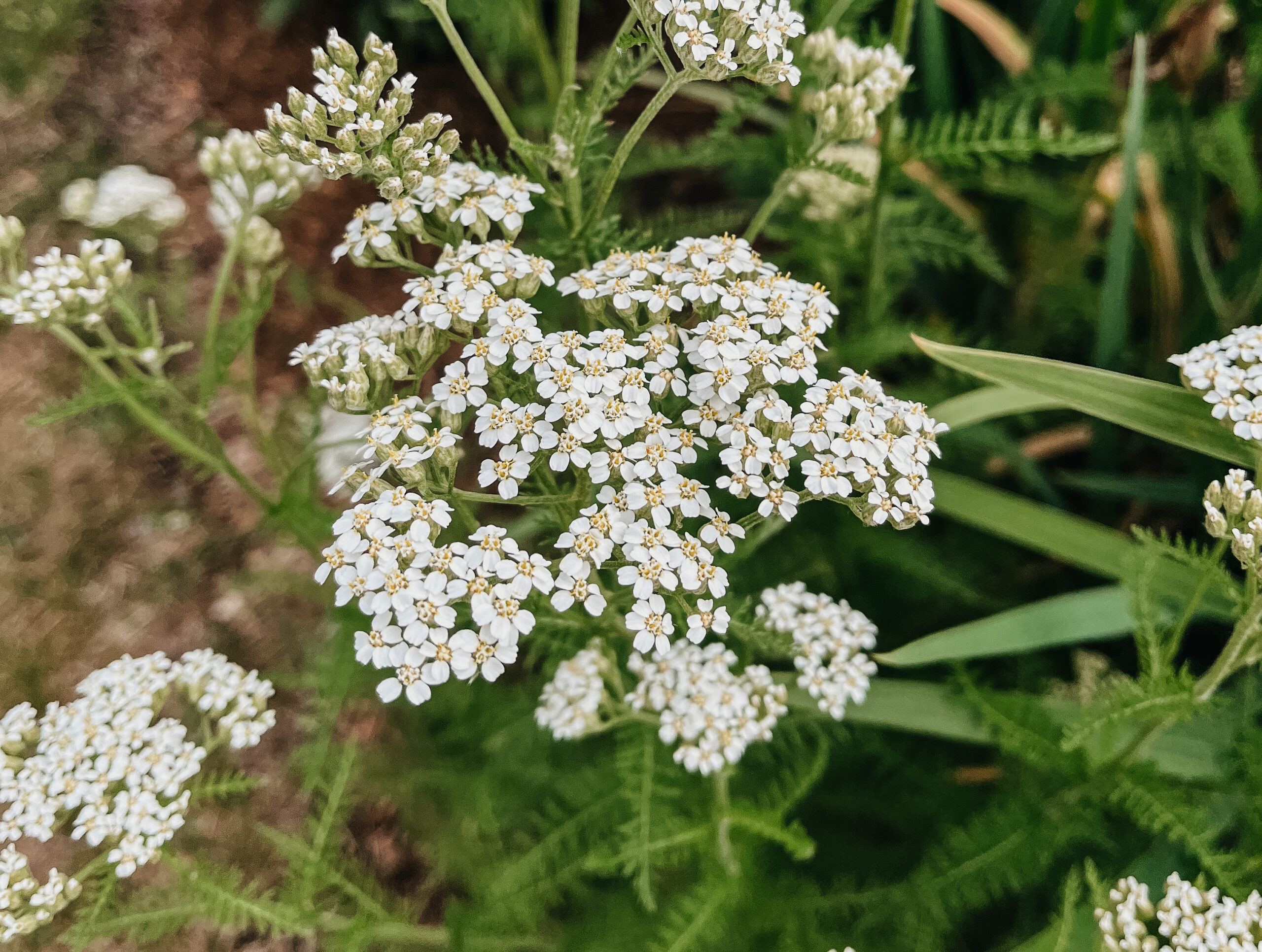
Yarrow (Achillea millefolium)
This herbal hero can be found in park lawns and city spaces along walkways and playground borders. The feathered leaves are covered in woolly hairs that give the foliage a blue-green hue. The plant can grow up to 3 feet high, with the leaves flanking the stalks alternately before they flower in clusters of white or light pink. When frequently mowed, the leaves stay close to the ground, and due to the plant’s ability to spread and reproduce through rhizomes, frequent mowing has no impact on proliferation.
With a history of uses both practical and mystical, this herbal ally has been used by humans to support wounds of both the body and soul. In the practice of I Ching, dried yarrow stalks are used in divination when seeking wisdom and guidance. Yarrow is associated with Achilles and Chiron in Greek mythology, both of whom represent the strength and vulnerability of the wounded warrior (Touwaide & Appetiti, 2024). Not only can this herb be used practically for physical injury, but yarrow flower essence is used to mend the overly sensitive aura and create gentle boundaries between self and others energetically (Kaminski & Katz, 1994).
Yarrow is a vulnerary herb, helping the body to support wounds. The leaves, covered in fine hairs, can be dried and then powdered for use as a first aid styptic, or blood-stopper, for nosebleeds, cuts, or puncture wounds. The antimicrobial properties of the leaves help to fight infection as well as slow bleeding. Yarrow can be used internally to ease both stagnant and heavy periods and regulate flow. Since yarrow can have a stimulating effect on the uterus, it is best avoided in pregnancy (Bruton-Seal & Seal, 2020).
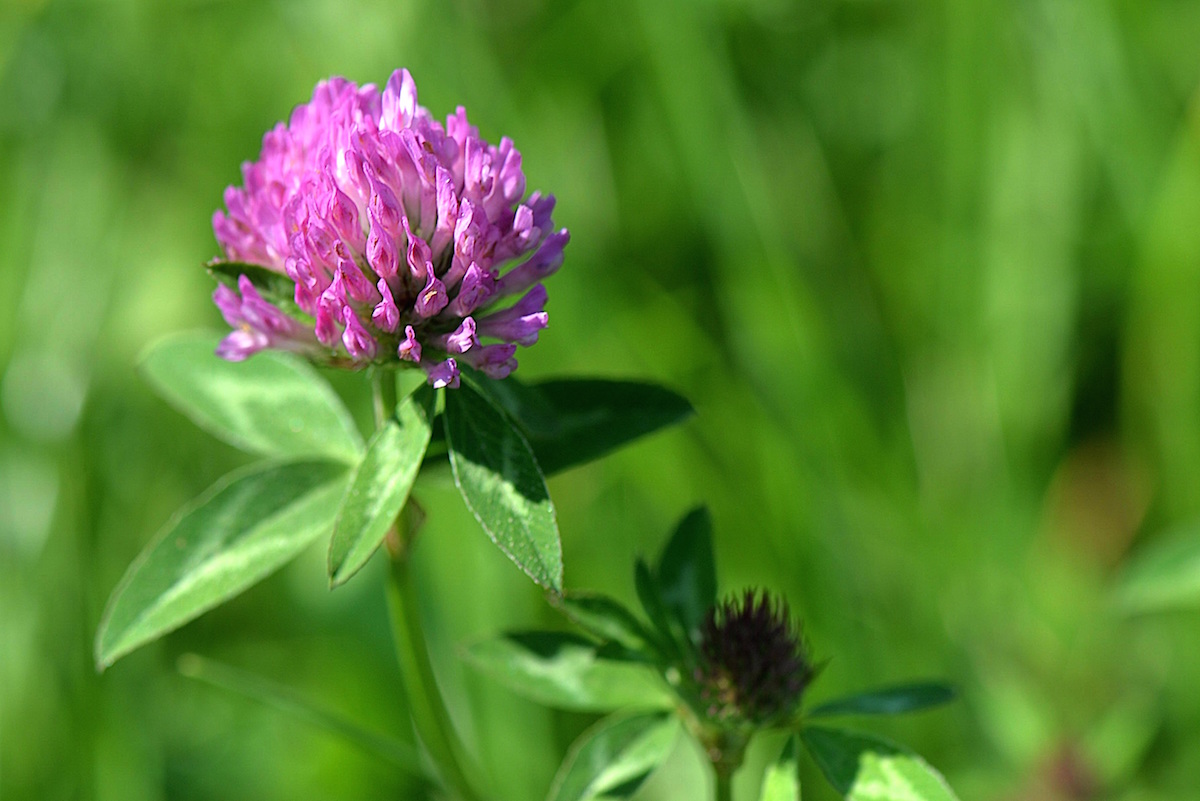
Clover (Trifolium spp.)
Clover can be found creeping into lawns and yards all over the world, and is commonly found along roadsides in ditches. Red (Trifolium pratense) and white (Trifolium repens) clover both have the three-lobed leaves marked with a whitish triangular brush stroke. Round, poofy clusters of many smaller flowers bloom at the end of lanky stems. White clover blossoms are smaller and white, while red clover blossoms are larger and come in shades of pink and purple.
Clover is associated with luck and the trinity, a plant that reflects favor no matter where it comes from. As a legume, it is a nitrogen fixer, and can improve soil health, making it a great cover crop and green manure for herbal gardeners. The blossoms produce a sweet nectar, which makes them a popular feeding flower for honey bees. White clover is most commonly used in honey making, and red clover is most often used in herbal formulation.
Red clover is known for its calming and cooling powers. This herbal ally has a gentle ability to clear out congestion in the glands of the mouth and throat. It can also be a help to those who deal with chronic inflammatory skin conditions such as eczema (Hoffmann, 2003). Along with its gentle clearing actions, clover contains a high amount of trace minerals. Clover is safe enough to use confidently with children and is most effective at fighting inflammation when taken consistently for several months (Bruton-Seal & Seal, 2020).
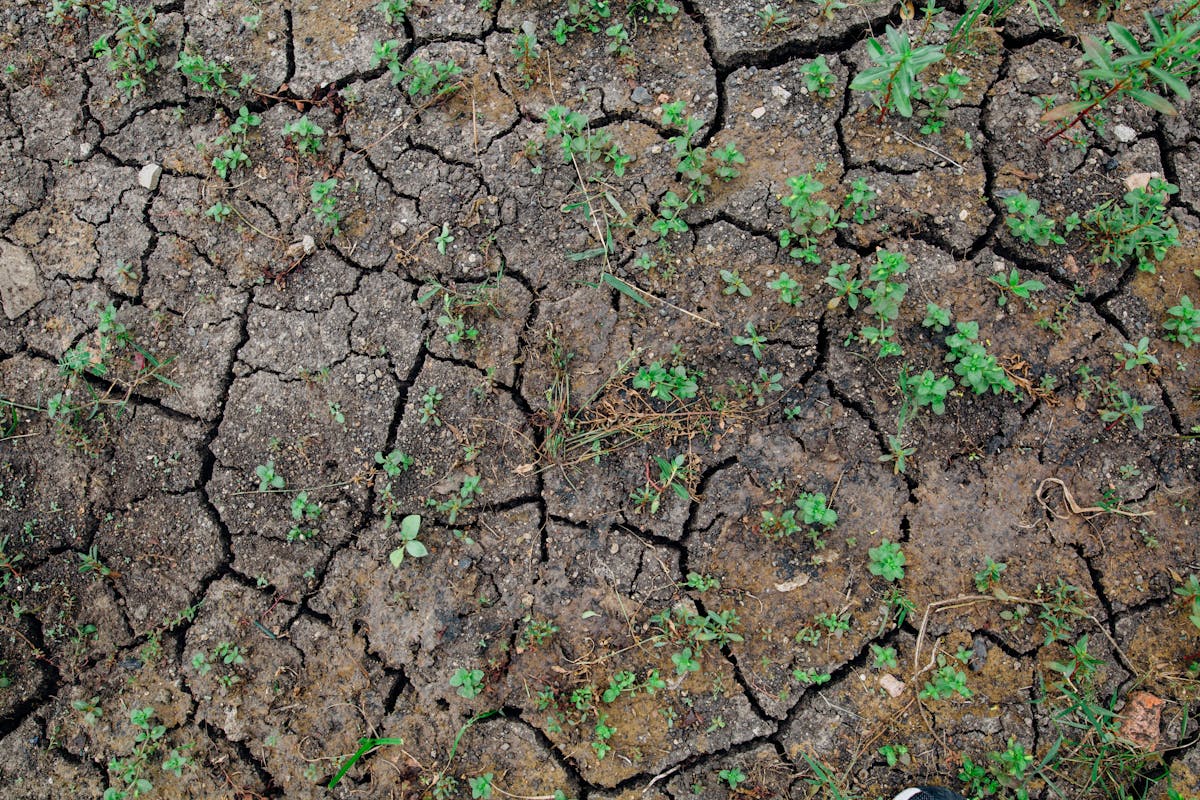
In Closing,
Being in relationship to our natural world and the city garden that grows in city spaces right outside our front door has a positive impact on our health and wellbeing, even when we’re not using the plant material found in these places. Learning to recognize the plants that grow in our immediate surroundings can help to form a sense of belonging and resilience.
Often referred to as common, these urban herbs have a long history of use for a wide array of symptoms. Their commonality is only in reference to their availability and frequency of use, not to their capabilities or actions. Over the course of my herbal practice, “common”, readily available herbs have made the deepest impressions on me philosophically. Their ubiquitous and subversive nature is, to me, representative of the spirit of herbal traditions.
The resilience and ability to persist and thrive in environments whose design and goal is homogeneity, the elimination of natural variation and chaos, is truly so punk rock and inspiring. I hope that getting to know these city slicking herbs that grow in city spaces and that it gives you a different outlook on your local flora and what your herbal allies have to teach you.
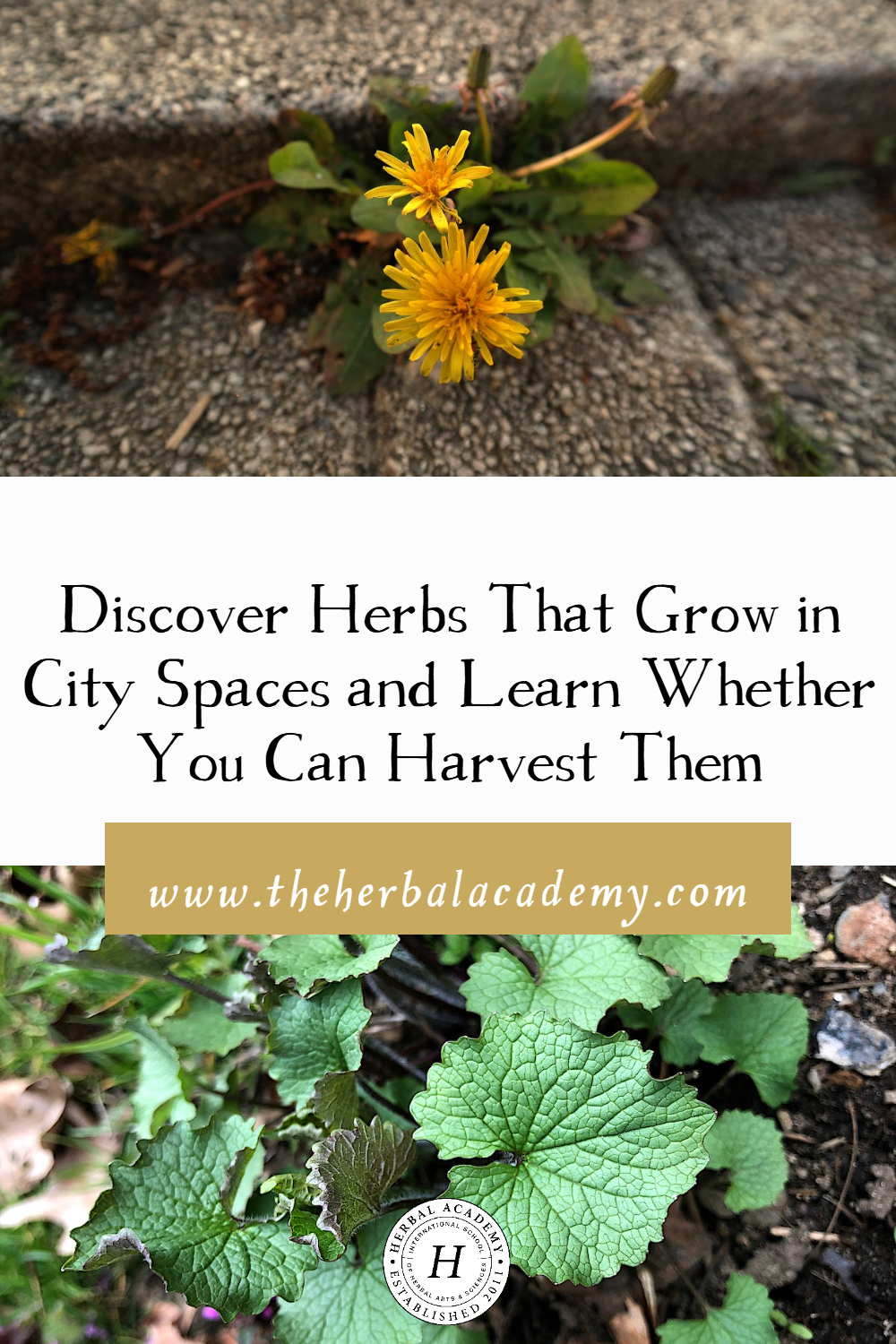
REFERENCES
Al-Shehbaz, I. A. (2012). Sinapis arvensis: Charlock. Jepson Flora Project. https://ucjeps.berkeley.edu/eflora/eflora_display.php?tid=44609
Bratman, G. N., Anderson, C. B., Berman, M. G., Cochran, B., de Vries, S., Flanders, J., … & Daily, G. C. (2019). Nature and mental health: An ecosystem service perspective. Science Advances, 5(7). https://doi.org/10.1126/sciadv.aax0903
Bruton-Seal, J., & Seal, M. (2020). The big book of backyard medicine: The ultimate guide to home-grown herbal remedies. Skyhorse Publishing.
Green, J., & Green, A. (2000). The herbal medicine-maker’s Handbook: A home manual. Crossing Press.
Hoffmann, D. (2003). Medical herbalism: The science and practice of herbal medicine. Healing Arts Press.
Kaminski, P., & Katz, R. (1994). Flower essence repertory: A comprehensive guide to North American and English flower essences for emotional and spiritual well-being. Flower Essence Society, Earth-Spirit, Inc.
Plants For A Future. (n.d.). Sinapis arvensis – L. https://pfaf.org/user/Plant.aspx?LatinName=Sinapis%2Barvensis
Touwaide, A., & Appetiti, E. (2024, August). Herbs in History: Yarrow. American Herbal Products Association. https://www.ahpa.org/herbs_in_history_yarrow
Weir, K. (2020). Nurtured by nature: Psychological research is advancing our understanding of how time in nature can improve our mental health and sharpen our cognition. Monitor on Psychology, 51(3), 50. https://www.apa.org/monitor/2020/04/nurtured-nature.


